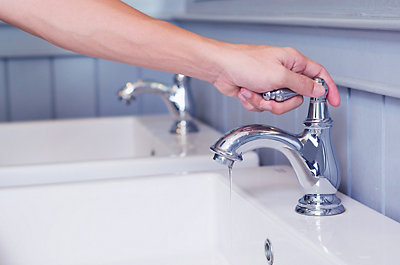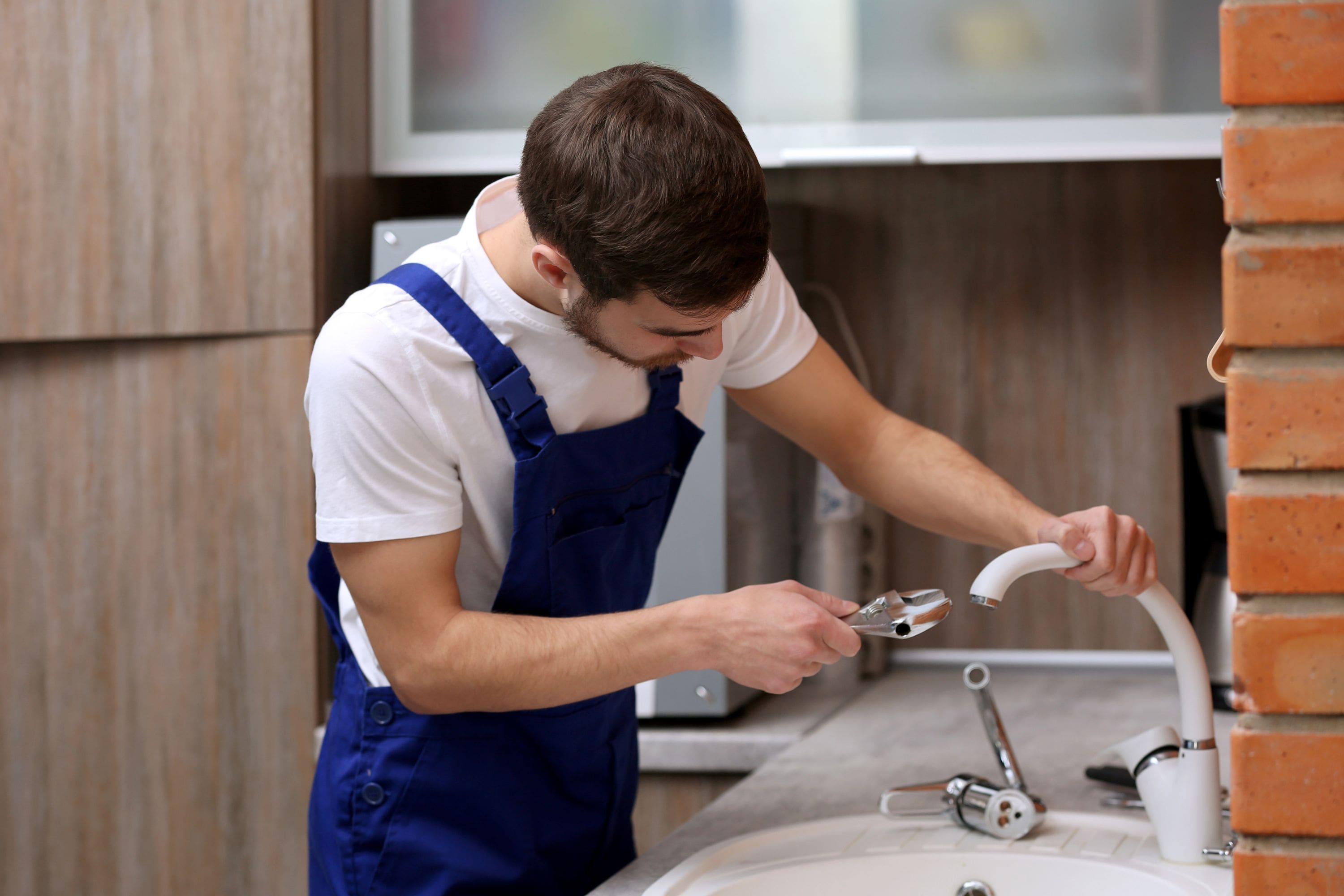Just how do you actually feel with regards to How to Fix a Dripping or Leaky Faucet ?

Dripping faucets might feel like a minor aggravation, but their influence exceeds just the annoyance of the audio. From drainage to sustaining unneeded economic costs and health risks, neglecting a trickling tap can bring about numerous effects. In this post, we'll explore why it's crucial to address this typical household issue immediately and properly.
Wastage of Water
Ecological Impact
Trickling taps contribute dramatically to water wastefulness. According to the Environmental Protection Agency (EPA), a single tap leaking at one drip per secondly can throw away more than 3,000 gallons of water each year. This not only stress water sources however additionally affects ecosystems and wild animals depending on them.
Step-by-Step Overview to Repairing a Dripping Tap
Devices Needed
Prior to attempting to deal with a leaking tap, collect the needed devices, consisting of an adjustable wrench, screwdrivers, replacement parts (such as washing machines or cartridges), and plumber's tape.
Usual Faucet Issues and Their Solutions
Determine the kind of faucet and the specific problem creating the drip. Common problems include damaged washing machines, corroded valve seats, or faulty O-rings. Refer to supplier instructions or on the internet tutorials for step-by-step advice on repair services.
Financial Costs
Raised Water Expenses
Past the ecological impact, dripping faucets can inflate water expenses significantly. The accumulated wastage with time translates right into greater utility costs, which can have been prevented with timely repair work.
Possible Property Damage
Furthermore, extended leaking can result in damage to fixtures and surface areas bordering the faucet. Water build-up can create staining, rust, and even structural concerns if left unattended, causing added repair costs.
Wellness Concerns
Mold and Mildew Growth
The constant presence of dampness from a trickling tap creates an excellent setting for mold and mold growth. These fungis not only compromise indoor air high quality but additionally posture wellness dangers, specifically for individuals with respiratory system conditions or allergic reactions.
Waterborne Diseases
Stationary water in leaking taps can end up being a breeding ground for microorganisms and various other virus, increasing the threat of waterborne conditions. Impurities such as Legionella microorganisms prosper in stagnant water, potentially causing serious ailments when ingested or inhaled.
Do it yourself vs. Professional Repair
Pros and Cons of Do It Yourself Repair Work
While some might try to repair a dripping faucet themselves, do it yourself repairs feature their own collection of obstacles. Without correct knowledge and devices, do it yourself attempts can aggravate the problem or bring about insufficient repair services, prolonging the trouble.
Benefits of Working With a Professional Plumber
Working with an expert plumber makes certain that the underlying root cause of the trickling tap is addressed effectively. Plumbers have the expertise and devices to identify and fix tap problems efficiently, saving time and minimizing the risk of more damages.
Ecological Obligation
Specific Payment to Conservation
Taking obligation for taking care of dripping taps lines up with broader initiatives toward water preservation and environmental sustainability. Every person's actions jointly make a considerable effect on protecting priceless resources.
Lasting Living Practices
By focusing on prompt repair services and adopting water-saving routines, people add to sustainable living methods that benefit both existing and future generations.
Safety nets
Routine Maintenance Tips
To avoid trickling taps, perform regular upkeep such as cleaning aerators, checking for leakages, and replacing worn-out parts immediately. Additionally, consider setting up water-saving tools or upgrading to extra efficient components.
Value of Prompt Fixes
Dealing with leaking faucets as quickly as they're noticed avoids additional water wastefulness and possible damages, ultimately saving both water and cash in the long run.
Effect On Home Value
Perception of Well-Maintained Property
Preserving a building in good condition, consisting of addressing maintenance issues like trickling taps, enhances its perceived value and value among prospective customers or lessees.
Impact on Resale Worth
Properties with well-maintained plumbing fixtures, including taps, command greater resale worths in the property market. Resolving trickling taps can add to a favorable impact throughout building inspections and negotiations.
Final thought
Attending to a trickling tap surpasses simple comfort; it's a necessary action toward conserving water, reducing financial prices, and guarding wellness and residential property. Whether with DIY repair services or expert assistance, acting to fix trickling taps is a little yet impactful way to advertise accountable stewardship of resources and add to a much healthier, much more lasting future.
How to Fix a Leaky Faucet: Step-by-Step Repair Guide
A leaky faucet may seem like a simple annoyance, but if it's not fixed promptly, that leak could cost hundreds to potentially thousands. From water damage to mold, mildew, and high water bills, even a tiny leak can be catastrophic if left unattended. Damage like this can even affect the overall value of your home, so it's important to take the right approach for leaky faucet repair. You may need the help of a plumber in some cases, but we've got a few tips you can try on how to fix a leaky faucet before calling the pros.
Four Faucet Types
When you're learning how to fix a leaky faucet, the first step is knowing what kind of faucet you're working with! There are four common types.
Cartridge Faucets
Cartridge faucets come in one- or two-handled varieties. In one-handled cartridge faucets, hot and cold water combines in a single cartridge. In the two-handled versions, hot and cold water are controlled separately and mixed in the faucet.
Ball Faucets
Ball faucets have a single lever you push up and down to adjust the pressure and rotate to change the temperature. A slotted metal ball controls the amount of water allowed into the spout.
Compression Washer Faucets
They're the oldest type of faucet, but they're still used in many homes — especially older ones. Compression faucets have two separate handles that, when turned, raise or lower the washer that seals a water valve. This valve stops water from flowing through the faucet when it is turned off.
Disc Faucets
Disc faucets rarely need to be repaired due to their maintenance-free design. The water flow is controlled by two discs — the upper one raises and lowers against a fixed lower disc, creating a watertight seal. If your disc faucet starts leaking, you may need to replace the seals or clean residue buildup from the inlets.
Fixing a Leaky Faucet
Step 1: Turn Off the Water
Whether you're learning how to fix a leaky bathtub faucet or how to fix a leaky kitchen faucet, always turn off the water supply to your working area when you're fixing a leak. The last thing you want is a flood added to your list of things to fix.
Look for the shutoff valves below your sink or around the tub and turn them clockwise to stop the water flow. If your faucet doesn't have shutoff valves, you may need to turn off the water for the whole house. Check to make sure it's off by turning the faucet on. If nothing comes out, you're ready to start the repair.
Step 2: Take Apart the Faucet
How you disassemble your faucet depends on the type of fixture you have. You can use a flathead screwdriver to remove the caps on top of the handle or handles for cartridge and compression faucets. Inside, you should see handle screws. Unscrew these with a screwdriver to remove the handle.
Disc- and ball-style faucets will typically have an inlet screw near the handle, and removing that will reveal the interior of the faucet.
Detach the Valve Stem
For cartridge- and compression-style faucets, you'll see the inner valve stem or cartridge once you remove the faucet handles. If you have a compression faucet, unscrew the brass valve stem. If you have a cartridge faucet, pull out the cartridge. If your cartridge has been in place for a while, it may require some tools or extra force to remove it due to mineral deposits.
Examine and Replace Parts
Once you've removed the parts, check them out to confirm what needs to be replaced. You may see corroded rubber washers, O-rings, stems, or cartridges. On a ball-style faucet, check the seats and springs for damage.
If you need to repair a leaky disc faucet, check the inlet and seals on the lower disc.
Once you determine what parts must be replaced, visit your local hardware store. Bring the damaged parts with you to ensure you can purchase the correct components to replace them.
Clean Valves and Faucet Cavity
If you've removed a stem or cartridge, you may notice mineral buildup in the faucet's threads. Use white vinegar to clean the valve seat by soaking it for a few minutes, then scrub it away with a soft toothbrush and rinse with warm water. You can also clean the interior of the faucet in the same way.
Reassemble the Faucet
Once your faucet is cleaned and the required parts have been replaced, it's time to reassemble it. Put the pieces back together and slowly turn the water supply back on. Doing this slowly is crucial because too much initial water pressure can damage the new hardware you've just installed.
https://homewarranty.firstam.com/blog/how-to-fix-leaky-faucet

Hopefully you enjoyed reading our post about Should I Repair or Replace a Leaky Faucet?. Many thanks for finding the time to browse our piece of content. Sharing is good. Helping people is fun. I treasure your readership.